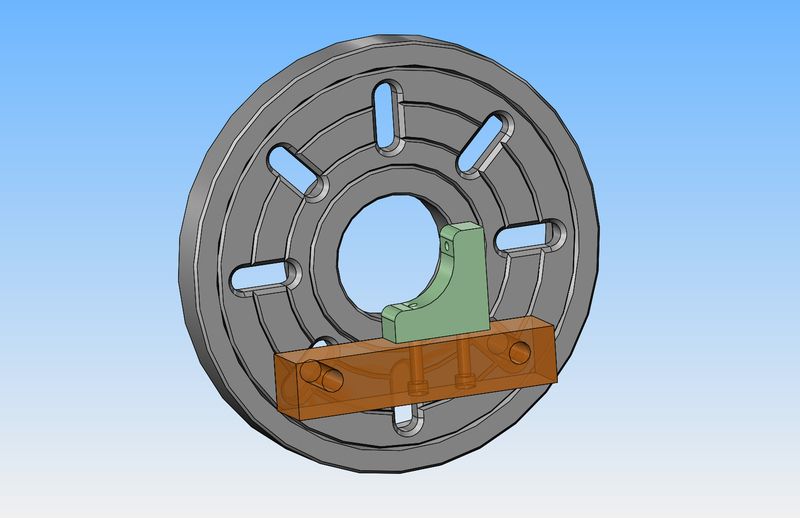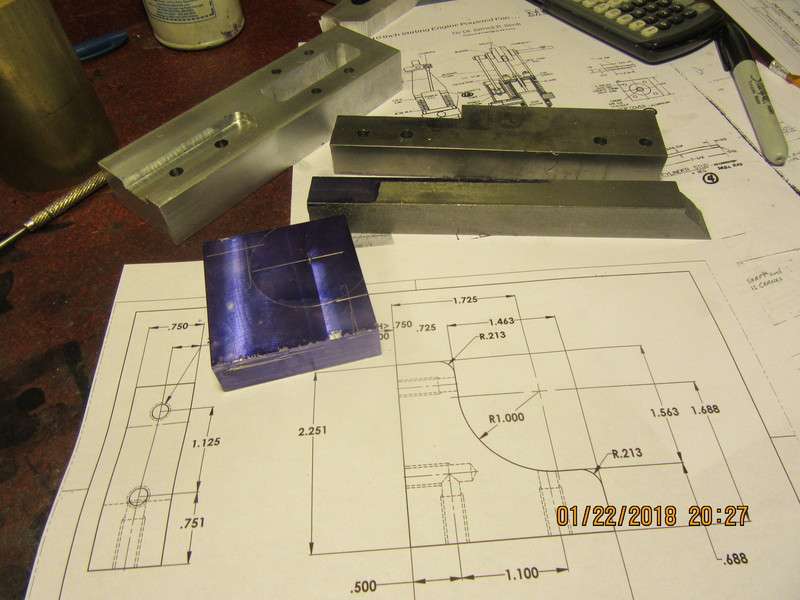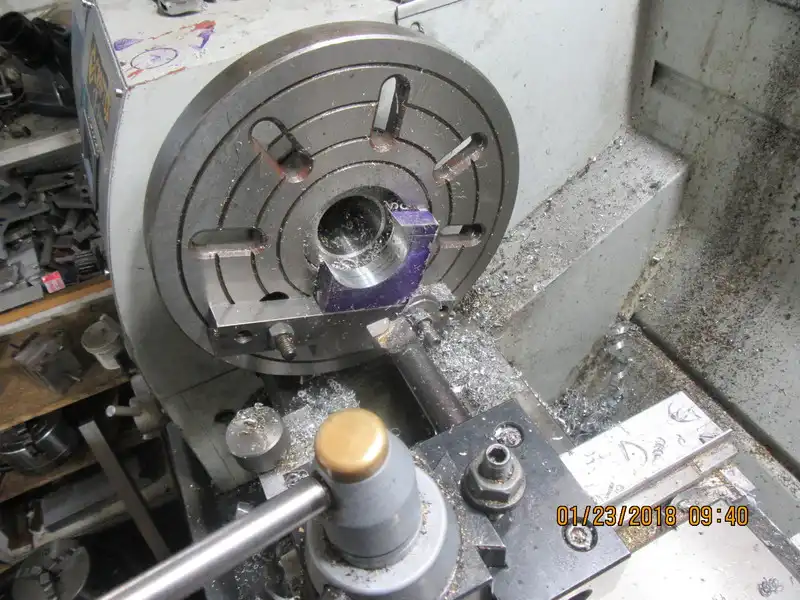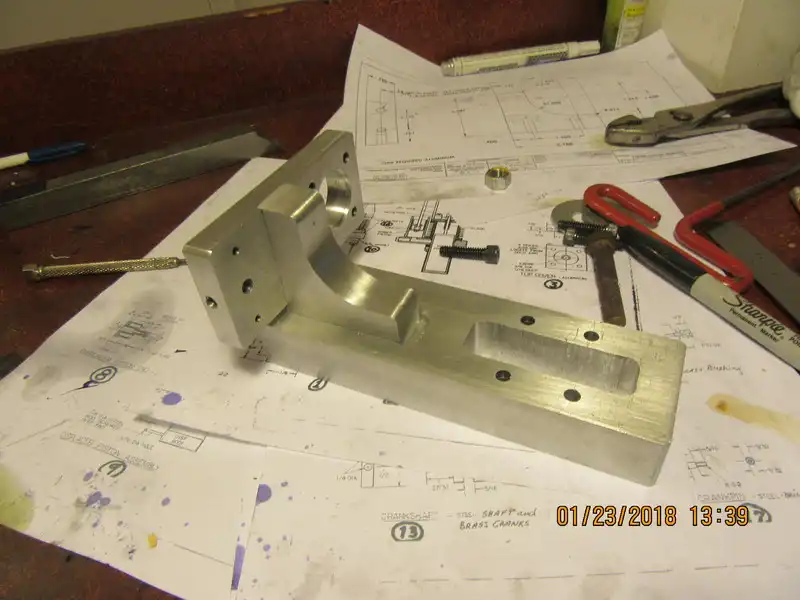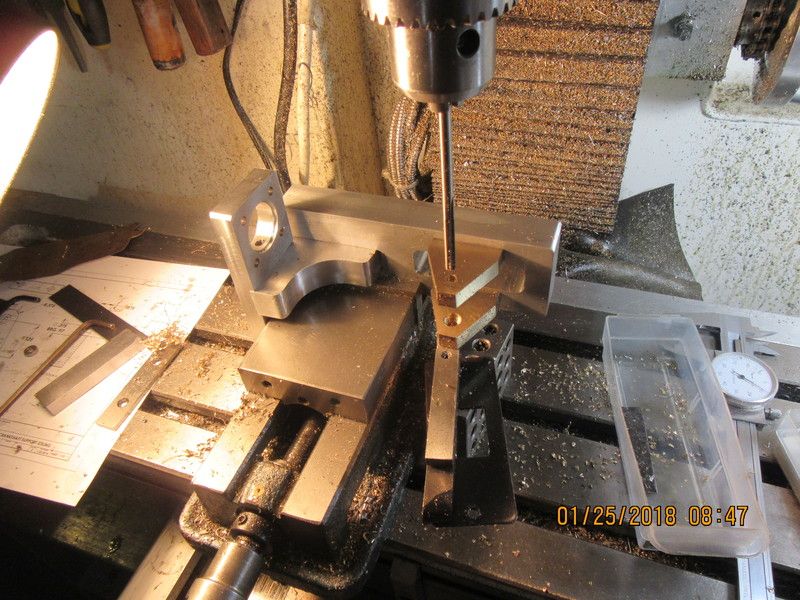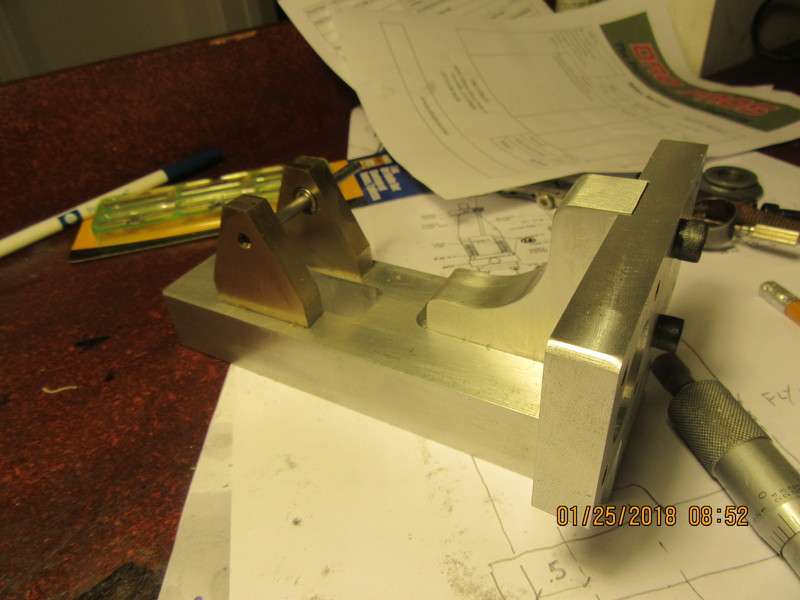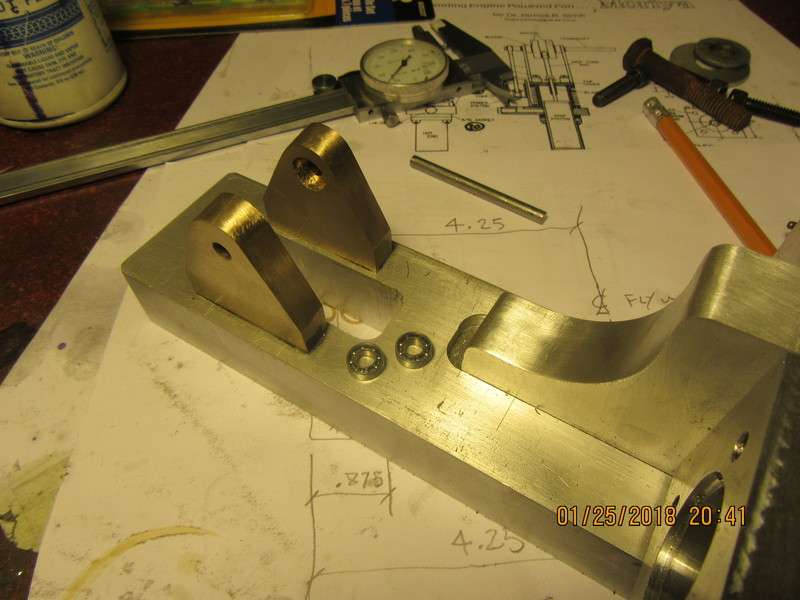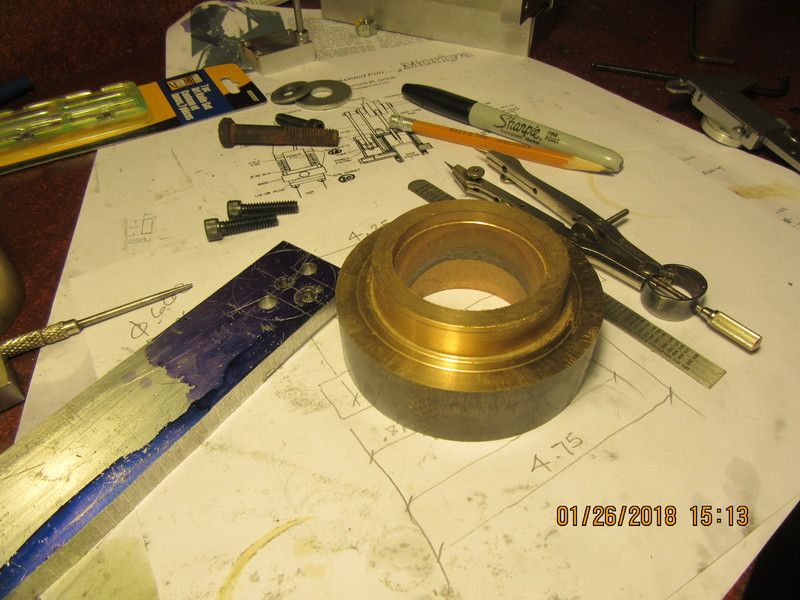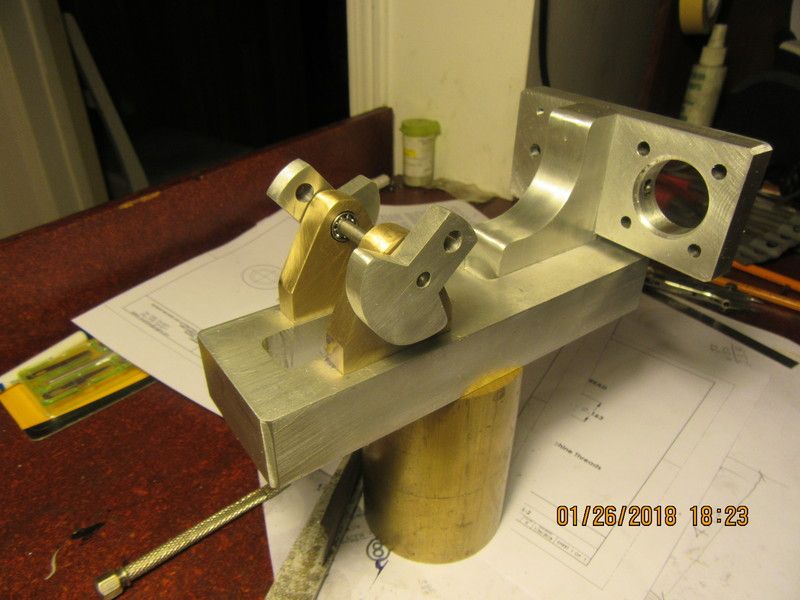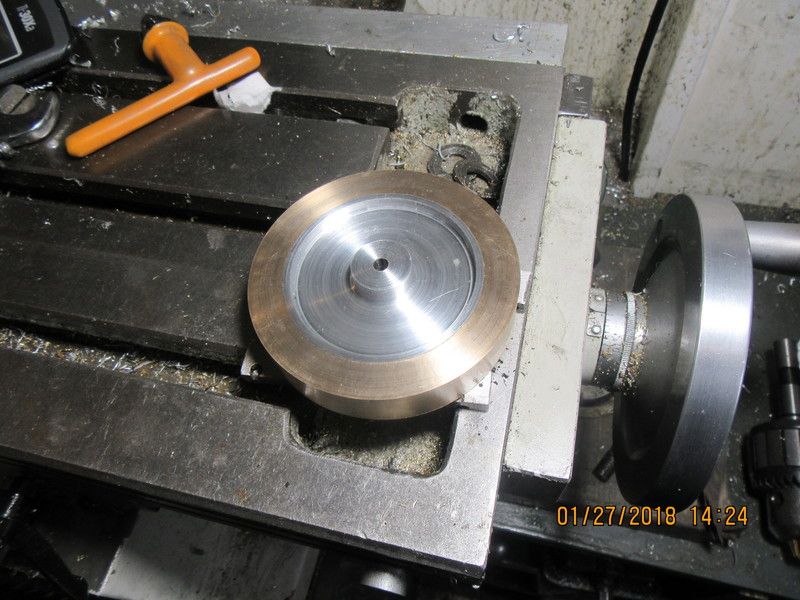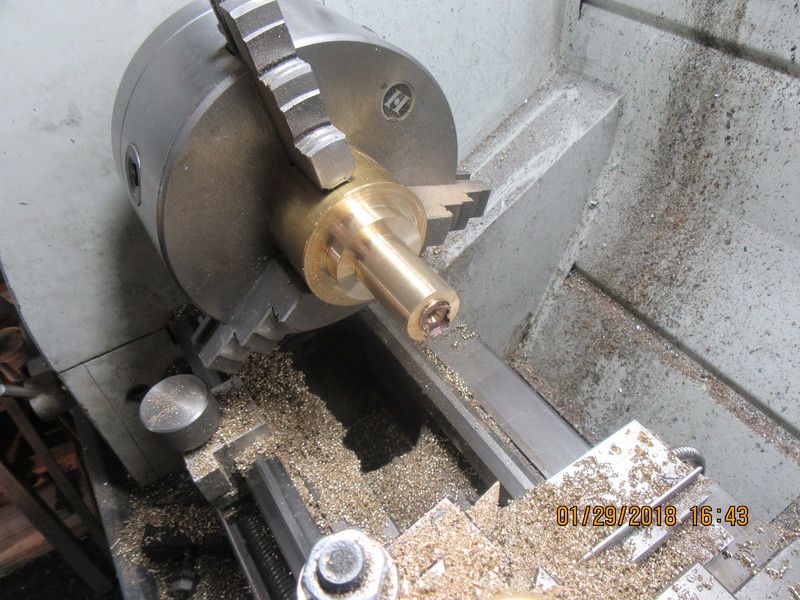Brian
I think you have made a basic mistake with your design
The Hot air engine works on the expansion and contraction of gas due to heating and cooling
I Think You have the Cooling Fins on the wrong side of the Plate which has the port going to the power pistons.
I use Berocca Viatmin Tubes for the Displacer Pistons ( 1 inch Diameter ) or fabricate from alluminium Tube . Hot end caps I form from Copper Sheet and Hi Temp Braze to End of Hot Cylinder
Use ball bearings with no oil just WD 40 for Lube
Piston Rod bush make 4 x Diameter Long for any type of Gas Seal . Cast Iron is best ( self Lubricating )
Piston Rod is normally 1/8 " drill rod polished to mirror finish to reduce friction
Power piston is cast Iron and run about 1/16 wall thickness
Friction and Gas seal is Everything
All cylinders are Spigot and Socket and use Thread Tape rolled into a twine to Seal . and a bit of Silicon sealer to hold in place
Use WD 40 to lubricate
These things wear out quickly as most do not use a cross head piston to take side load of piston rod and Leak air / gas
I use a cross head piston on my designs to prevent this
